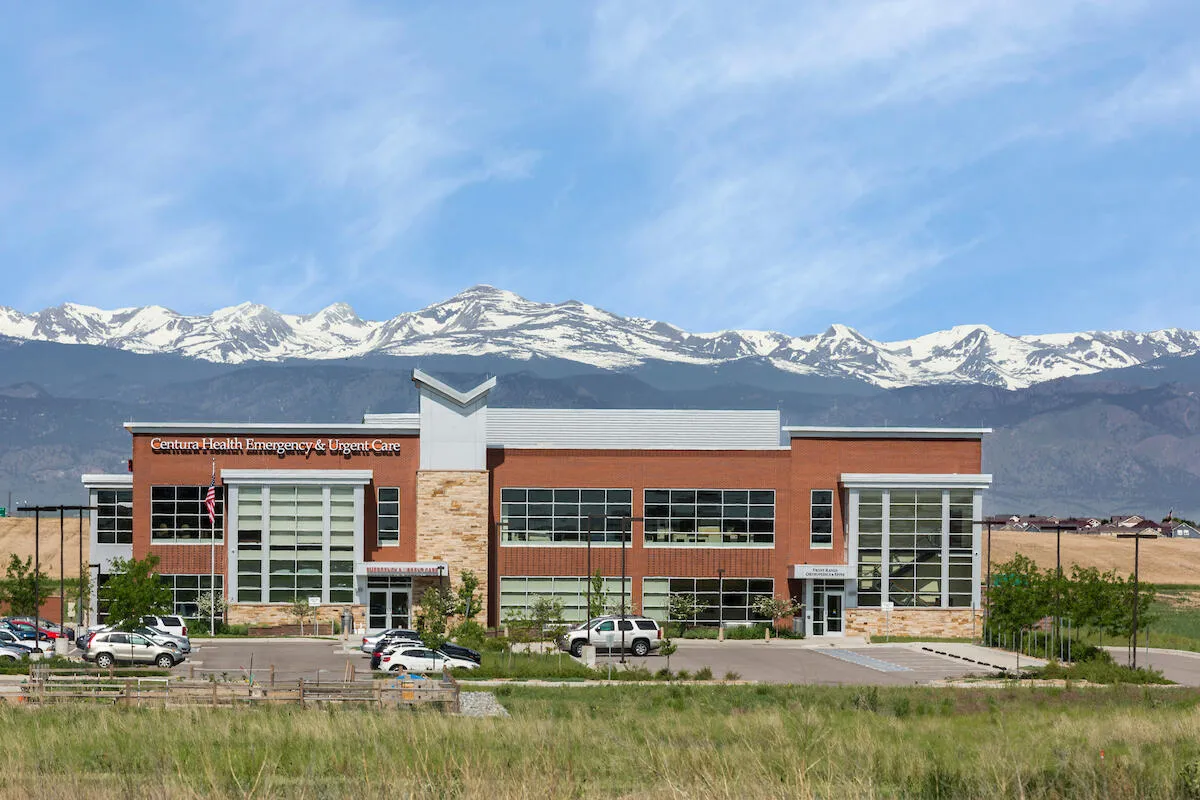COVID-19 intensifies nursing, health-care labor shortages

Since the start of the COVID-19 pandemic, nurses and other health-care workers faced longer hours and increased workloads, leading to fatigue, burnout and the desire to quit. At the same time, other workers left retirement to pick up the slack. And then some took early retirement or opted for other careers just after leaving school.
“There’s an incredible compassion fatigue our nursing profession has suffered during the pandemic,” said Margo Karsten, a registered nurse and president of Banner Health Western Region. “They put their families on hold. They made personal sacrifices. They put their own lives at risk.”
Karsten, in the nursing field since 1984, observed a cycle of nursing shortages over the decades caused by an aging workforce and an increase in service demand, but nothing like the shortages brought on by the pandemic. Nurses and the rest of the staff at health-care facilities are frontline workers who have no choice but to come in to the workplace, working in a situation not seen since the Spanish flu of 1918, Karsten said.
SPONSORED CONTENT
“The fear of the unknown, for me, is a great stressor in life. We’re asking them to do this,” Karsten said. “That’s a lot of stressors when you go into an unknown territory like a pandemic.”
Early into the pandemic, Banner Health proactively set up a center of healing for its staff with programs that address issues of compassion fatigue, Karsten said. Staff not only experienced emotional fatigue but physical fatigue from the intensity of work, longer hours and picking up shifts needing coverage, she said.
Boulder Community Health plans to centralize and increase its physical, mental and spiritual programming through a newly created center for resiliency and has increased support of its staff in the past six months. Support includes a variety of things such as therapy, webinars, debriefings and ritualized calming activities.
“We have seen individuals feeling that they can’t take the stress of health care, so they’re burned out,” said Jackie Attlesey-Pries, MS, RN, vice president of operations and chief nursing officer of Boulder Community Health. “Our biggest concern is we lose them all together.”
To keep staffing at the needed levels, Boulder Community Health offers just-in-time training to teach employees new skills so that they can work in areas of care where help is needed, taking on those extra shifts, Attlesey-Pries said.
The shortage of nurses has been an ongoing conversation for years, compounded by the pandemic, but also by Baby Boomers reaching retirement age, advances in medicine, improved management of chronic conditions and people living longer, said Angie Scarpello, RN, BSN, a clinical recruiter for Columbine Health Systems, a provider of health-care services and senior care facilities in Northern Colorado.
“With Baby Boomer-aged nurses retiring, this is going to leave a huge requirement for licensed nurses to fill,” Scarpello said.
Likewise, turnover at Boulder Community Health was higher during the pandemic than during previous years, Attlesey-Pries said. Some of the staff chose to retire early or reduce hours, while others opted to work for other health-care organizations or quit to live closer to their families, since they couldn’t travel to visit them, she said.
A few left the field after the vaccine’s introduction earlier this year and the lowering of infection numbers; they were fatigued from increased expectations but didn’t want to resign at the height of when they were needed, Scarpello said. Others interested in the field decided to choose other paths instead, finding out nursing wasn’t what they’d envisioned it to be, she said.
“A shortage can lead to errors, burnout, dissatisfaction for both staff and patients, and a potentially higher risk for poor patient care,” Scarpello said.
Columbine Health Systems responded by not admitting more patients than what staff can provide for in care and had to close down a wing at one of its facilities due to lack of staffing, Scarpello said. Staff also had to fill in the gaps for families, providing emotional support for patients, she said. Before the pandemic, families could visit patients, but at the height were limited to essential visits, she said.
“Prior to the pandemic, families provided support and comfort to their loved ones, and as much as we try to give that care and support, there is no replacement for families,” Scarpello said. “All of our staff has stepped up and added more to their plates to support their residents and each other. … We’re all getting in there helping residents any way we possibly can.”
Patient needs increased in other ways during the pandemic.
For instance, some delayed their care, not coming in for their regular wellness checks or elective procedures, especially during spring and fall 2020, Karsten said. The result was a high acuity of patient needs when they did visit health-care facilities, she said.
“When they come to the emergency department, they’re significantly sicker,” Karsten said. “What we’re seeing in patients shows me our patients are sicker. We won’t realize the why until we get through this next year.”
The pandemic placed additional stress on staff from frequent changes in policies to address health and safety issues, increased prep time before giving care to prevent the spreading of the virus and worry about bringing the virus home to family, Scarpello said. Employees at all levels wear masks their entire shifts, which is tiring in itself, plus hot and uncomfortable, she said.
“Working in a hospital is a very physical job,” Scarpello said, pointing out the amount of walking and the level of physical labor that is involved in care. “It’s constantly moving positions.”
As care needs increase, health-care facilities are losing some of their staff to nurses relocating to hospitals and facilities outside their state, particularly in areas hard hit by the pandemic.
“The traveling nurses could make more by being travelers than being local. They chose to leave their parent organization and travel for a greater risk,” said Ron Andro, RN, CEO of Banner Health Northern Colorado Region.
The nurses work for a traveling agency, often staying at a health-care facility for 12 to 13 weeks, Attlesey-Pries said. Boulder Community Health lost several of its nurses and other staff to traveling work, particularly in the intensive care unit, but also has hired travelers to fill in the gaps, she said.
“The salary is much higher because of the inconvenience. You have to travel to your job,” Attlesey-Piese said.
Lori Wightman, senior vice president of nursing and chief nursing officer at SCL Health, has found that travelers are tired and less willing to take on the traveling positions. Even so, SCL needs to hire contract labor to address the labor shortage at its facilities, particularly in nursing and especially in the area of acute care, she said.
“The pandemic has magnified the shortage,” Wightman said, adding that nurses are fatigued and experiencing “elements of grief, anxiety and PTSD.” “People are retiring or moving out of hospital-based care. They’re moving closer to family and friends post-pandemic. Some are going part-time. Some need a change of venue or to restore in some way.”
Nurses leaving the region ends up opening up more positions locally, Scarpello said.
“We’re all recruiting from the same pool, so there’s more competition,” she said. “Health-care workers need extensive training and specific qualifications.”
Adding to the issue is a shortage of instructors, who make less hourly than bedside and traveling nurses, Scarpello said. Yet, instructors need more education of at least a master’s degree or a doctorate, she said. Some schools and training programs are restricting enrollment due to a lack of faculty and many have waitlists, she said. At the same time, students are focusing more on advanced practices and not being at the bedside, she said.
“I do think focusing on the promotion of public health and preventative measures will help, as well as attracting more nurses to primary roles to help manage chronic conditions, so people will require less medical attention in the future,” Scarpello said, adding that encouraging men to enter a female-dominated field also can address the labor shortage. “Making nurses more resilient and understanding of the role is key as well. Many new grads will quit their jobs within the first year … because they’re not prepared for the real world of nursing. This is an issue that needs to be addressed by nursing programs and employers both working together.”
Banner Health, for example, is joining its academic partners to identify ways to increase enrollment, provide the needed support and make programs more attractive to prospective students, Karsten said.
“The blessing is we have a strong nursing program in Northern Colorado,” Karsten said. “It’s the curriculum and the way we train our students. When they graduate, they are very strong nurses.”
Nursing is a fulfilling and also a challenging profession, Andro said.
“There is such latitude of what you can be as a nurse,” Andro said, adding that the skills can be applied to other jobs within the broad array of the field. “There are so many things you can become in nursing.”
Since the start of the COVID-19 pandemic, nurses and other health-care workers faced longer hours and increased workloads, leading to fatigue, burnout and the desire to quit. At the same time, other workers left retirement to pick up the slack. And then some took early retirement or opted for other careers just after leaving school.
“There’s an incredible compassion fatigue our nursing profession has suffered during the pandemic,” said Margo Karsten, a registered nurse and president of Banner Health Western Region. “They put their families on hold. They made personal sacrifices. They put their own lives at risk.”
Karsten, in the nursing…




